“Round Up The Unusual Suspects”: Uncommon Sources of Genealogical Information

To paraphrase Captain Renault, played by Claude Rains in the classic 1942 film Casablanca, in today’s blog we’re taking a look at unusual sources as genealogical resources. Generally, these are resources we wouldn’t normally associate with genealogical research. This approach is particularly important for the historical periods before the start of standard sources, but isn’t limited to them. They may be in any form or format and may be found anywhere.
What genealogist doesn’t get excited when confronted by an unusual source? He or she wants to extract everything from it that will advance the research. But just as it is with traditional sources, it’s worthwhile to question it and investigate the origin of an unusual source. Why was it created? How credible is it? It might be unusual but it still needs to be believable. What does it tell you about the ancestor? How does it make the family history more three-dimensional and help you understand an ancestor’s life and times?
A helpful way to recognize an ancestor in a more unusual record set is to get to know him or her well in traditional genealogical records. Should you come across a non-traditional record collection (as with traditional resources), learn as much as you can about it, such as why it was created, what kinds of information it contains, its possible significance, and any peculiar characteristics it may have. However, although unusual sources are exciting to find, it’s also possible to find unusual records in usual places.
Unusual sources can take many forms than just documents. They may also be physical objects, photos, or some other form. But whatever form they take, there would be far too many list, so let’s look at some examples.
Trade Publications
Many companies published trade publications that contained all kinds of news pertaining to their industry in general and company in particular, including recognition of employees in their work, social, and family lives (Fig. 1). This includes births, marriages, and deaths. These publications can be challenging to locate, but digitization is helping to make them more accessible. For example, The Whitin Spindle was a company periodical of the Whitin Machine Company in Whitinsville, Massachusetts from August 1919 to December 1965. It was issued to employees on a monthly and bi-monthly basis beginning in August 1919 but was not published during the Great Depression or during World War II. The Spindle gives the reader an interesting glimpse into life in a factory town in the 20th century, and it’s now available digitally in the Internet Archive. In fact, the April 1955 issue features an employee talking about doing genealogical research on his family as well as genealogy in general.
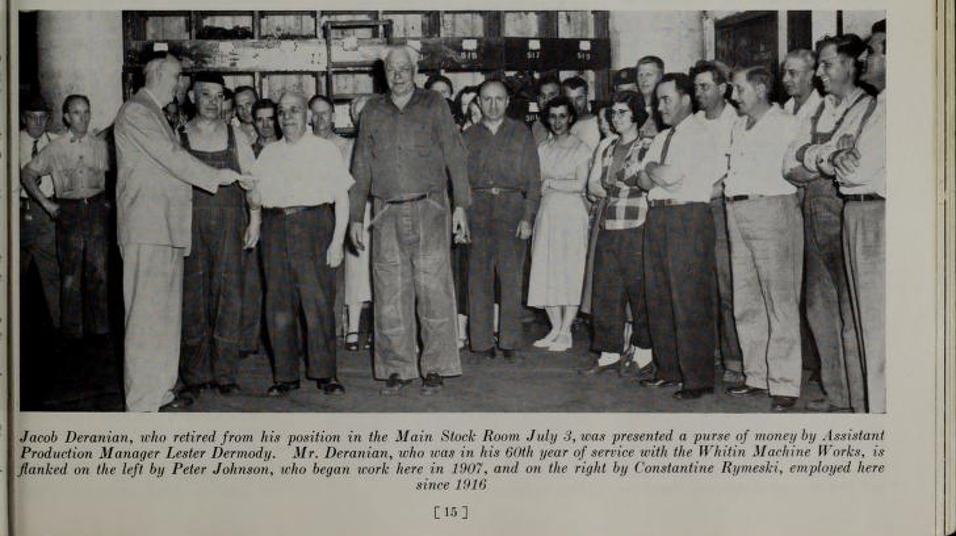
Jewelry
All kinds of jewelry have been passed down through generations of families. Some jewelry may be specialized, denoting membership in various organizations such as Freemasonry (Fig. 2). You may find high school and college rings once worn by an ancestor (Fig. 3). However, if you find fraternal organization jewelry you should look for additional evidence of membership; sometimes non-members wore this kind of jewelry simply because they liked it.
It’s also possible to do genealogy with birthstones! One mother of four children received a Mother’s Day gift of a ring set with each of the children’s birthstones, making it possible to match the stone to the birth month (Fig. 4).
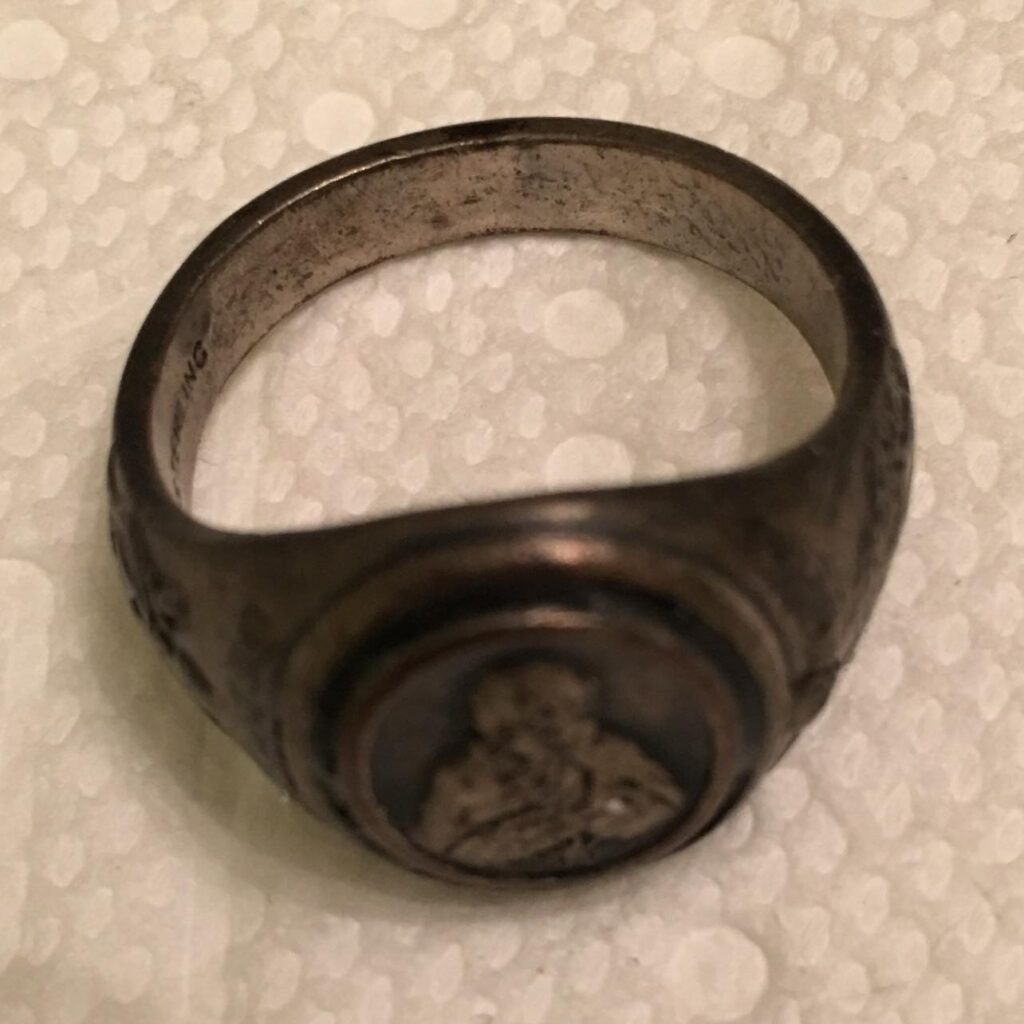

Waltham, Massachusetts.
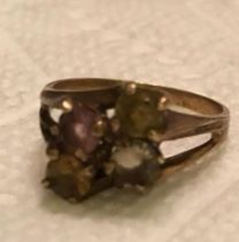
Ephemera
These are vintage printed or written items which originally served some specific purpose and were not expected to be kept or maintained. They could include any number of things such as receipts, membership cards from organizations, identification cards or badges from employers (Fig. 5), travel brochures, ticket stubs, even cancelled checks. Oftentimes in genealogy, one person’s trash is a genealogist’s treasure because ephemeral items may contain scraps of family history. For example, discovering a great-great-grandfather’s membership card from an organization you hadn’t heard of might lead you to seek old membership records or newspaper articles about his involvement in the organization, and maybe even photos.

Ephemera can also be found in collections housed at archives, libraries, societies, and museums. One way to find such collections is through the repository’s catalog or a union catalog (one that includes multiple repositories), such as ArchiveGrid or the National Union Catalog of Manuscript Collections (NUCMC). Check to see what materials might have originated in the place your ancestor was from. If, for example, you had a relative who worked for the aforementioned Whitin Machine Company and you search ArchiveGrid to see if some institution has its records, you’ll find them housed in the Baker Library at Harvard University.
Household Objects
Even household objects can be genealogically helpful. An 1812 sampler by twelve-year-old Susan Weston shows the marriage date of her parents and the birthdates of her siblings (Fig. 6). Producing a sampler was common way in the 18th and 19th centuries for a girl to demonstrate her needlework skills. Susan Weston used her skills to produce a family tree. Heirloom quilts may also contain genealogical information.
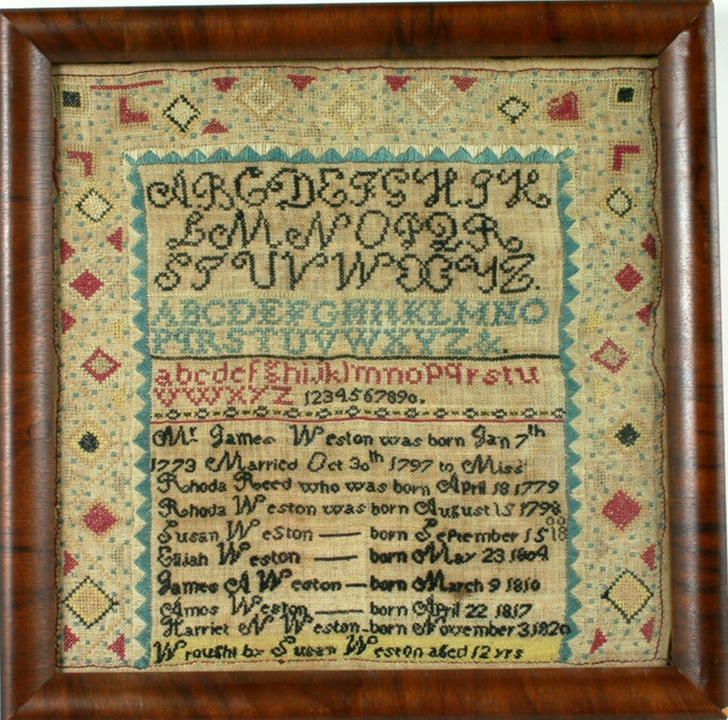
Government/Institutional Studies
Occasionally governments and other institutions have conducted various studies related to particular issues or groups of people that have genealogical value, i.e., they can contain personal information. One such group was the deaf community. You can learn more about these records by reading the article by Thomas W. Jones, Ph.D., “Deafness-focused Records for Genealogical Research” in the National Genealogical Society Quarterly 81 (March 1993): 5–18. Information about another type of record set is described in the article “Files of the Eugenics Record Office: A Resource for Genealogists.” National Genealogical Society Quarterly 82 (June 1994): 97-113. The ERO’s purpose was to “study human genetics” and use it “to reduce heritable problems in the human species.” Records consist of genetic and genealogical information gathered from the late 18th to late 19th centuries and into the 20th century. They are available on microfilm at the FamilySearch Library in Salt Lake City, Utah and the American Philosophical Society in Philadelphia.
Unusual Information in Usual Sources
It’s always exciting to stumble upon a source of genealogical information you wouldn’t normally expect to find, but it’s equally exciting to come across something unusual in a “usual” source. For example, the 1925 state census of Iowa, which you can search for free on FamilySearch with a free login and password, includes each person’s mother’s maiden name. You might think to look for an early divorce record or record of a name change in a courthouse, but depending on the time period you would actually have to look at state legislative records for them. Some databases contain unique records, such as “U.S., Craftperson Files, 1600-1995” at Ancestry.com (Fig. 7). This includes images of a series of card files containing names, working dates, places of residence, and other information about American craftspeople.
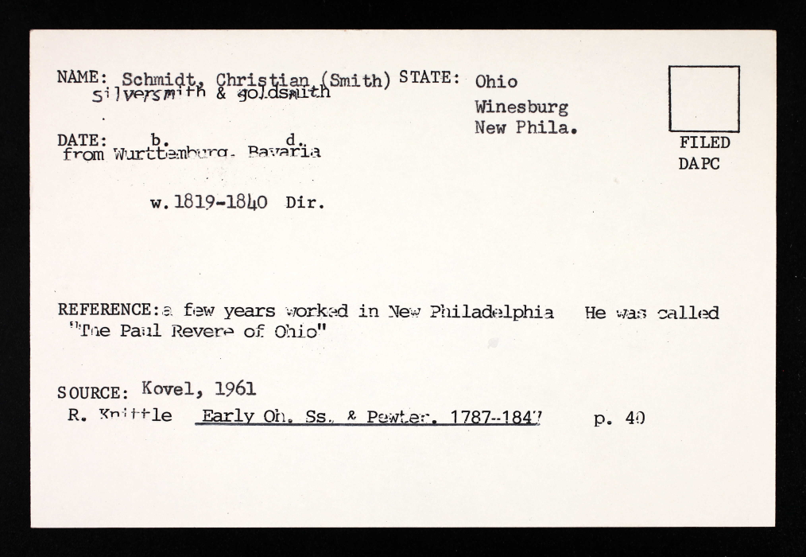
Federal census records may contain unofficial comments about a person or family. For example, Assistant Marshal A. A. Hobson said of one family in the 1870 census of Christiansburg, Montgomery Co., Virginia: “These People live in the woods and you can hardly Tell whether they are Humans or Brutes (Fig. 8).“ In some instances, enumerators provide more information than was officially required. A South Carolina enumerator in 1870 Lexington Co. listed each person’s South Carolina county of birth (no county was required), birth month of everyone (supposed to be just those born within the year), and month of everyone’s marriage (supposed to be just those married within the year) (Fig. 9)!
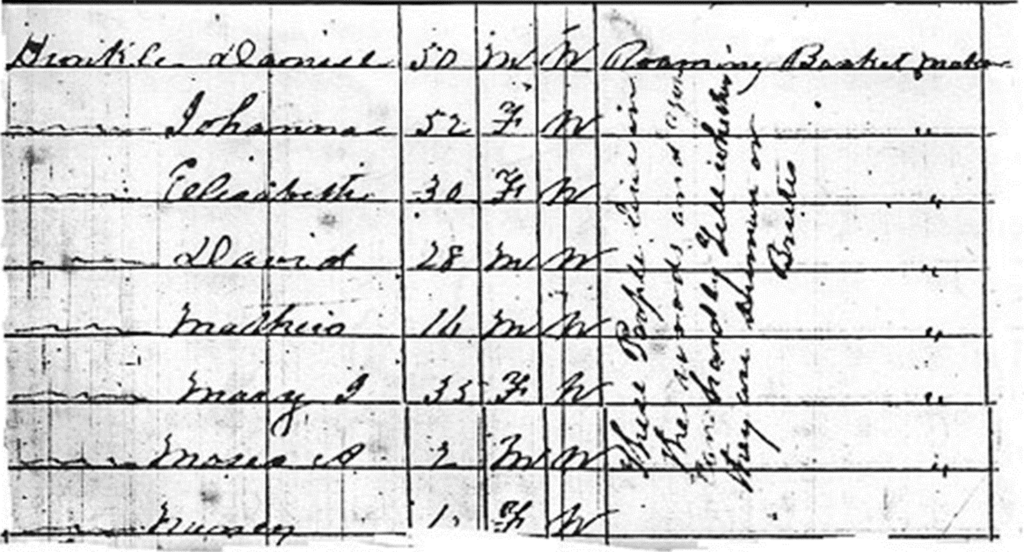
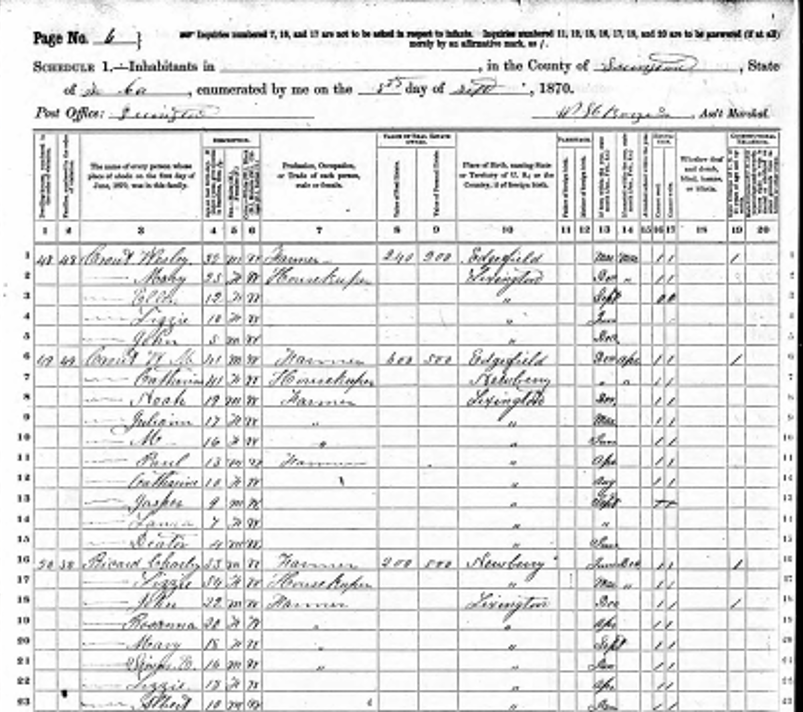
County clerks sometimes felt it necessary to explain discrepancies in their records. When George Painter (born Johann Georg Bender) applied for a Revolutionary War pension in Rutherford Co. North Carolina on July 14, 1834, the clerk, struggling to understand heavy German accents, wrote that “It is hard amongst the Jermans to understand how to pronounce for instance Painter Panter Panther this is only to justify the Mistakes.” (Fig. 10) In a family history this would provide an interesting commentary on communication issues with immigrant populations.

If you’re researching in a county courthouse, you may come across a separate volume sometimes called a “Miscellaneous Record Book.” These records usually contain miscellaneous legal information that was not recorded elsewhere in the county records. An example is the Washington County, Arkansas Miscellaneous Record Book, 1841-1871. It includes such diverse items as family birth records, slave manumissions, and apprenticeship records. One researcher found an inheritance claim in this book by Martha _____ (Pyeatt) Harger from Warrick Co., Indiana that turned out to be absolutely crucial in identifying her ancestor Nathan Pyeatt. Nathan was a previously unknown first son of one Jacob Pyeatt of Washington Co., Arkansas, and first husband of Martha Harger. Martha was trying to claim Nathan’s share of his father’s estate; no other source provides this information, and it proved the relationship..
If there’s a moral here, it’s that you should never underestimate the power of the unusual source and the unlikely place! Genealogy is where you find it, so don’t discount ANY source that potentially has genealogical value just because it’s not a “typical” record. It can be a great thing in itself but it can also lead to additional sources or take you in a different direction. Also, the source itself may provide additional insight. So consider its “unusualness” as a fortuitous find that moves you forward (or backward!) in your genealogical journey.
For more information on unusual sources and unlikely places, check out the book Hidden Sources: Family History in Unlikely Places by Laura Szucs Pfeiffer (Salt Lake City, UT: Ancestry, 2000) which is in the Grapevine Library’s genealogy collection. It’s a great resource for identifying one hundred unlikely places where you can find family history, and offers short explanations that help you determine immediately whether or not a record contains what you need. Some state guides may also prove helpful identifying unusual information in that locality, and are also in the genealogy collection:
- Davis, Jr., Robert Scott. A Researcher’s Library of Georgia History, Genealogy, and Records Sources. 2 v. Greenville, SC: Southern Historical Press, 1991.
- DuMelle, Grace. Finding Your Chicago Ancestors : A Beginner’s Guide to Family History in the City and Cook County. Chicago: Lake Claremont Press, 2005.
- Côté, Richard N. The Genealogist’s Guide to Charleston, S.C. Charleston, SC: Côté Publications, 1978.
- Lainhart, Ann S. A Researcher’s Guide to Boston. Boston: New England Historic Genealogical Society, 2003.
- The Georgia Black Book: Morbid, Macabre & Sometimes Disgusting Records of Genealogical Value. 2 v. Easley, SC: Southern Historical Press, c1982-c1987.


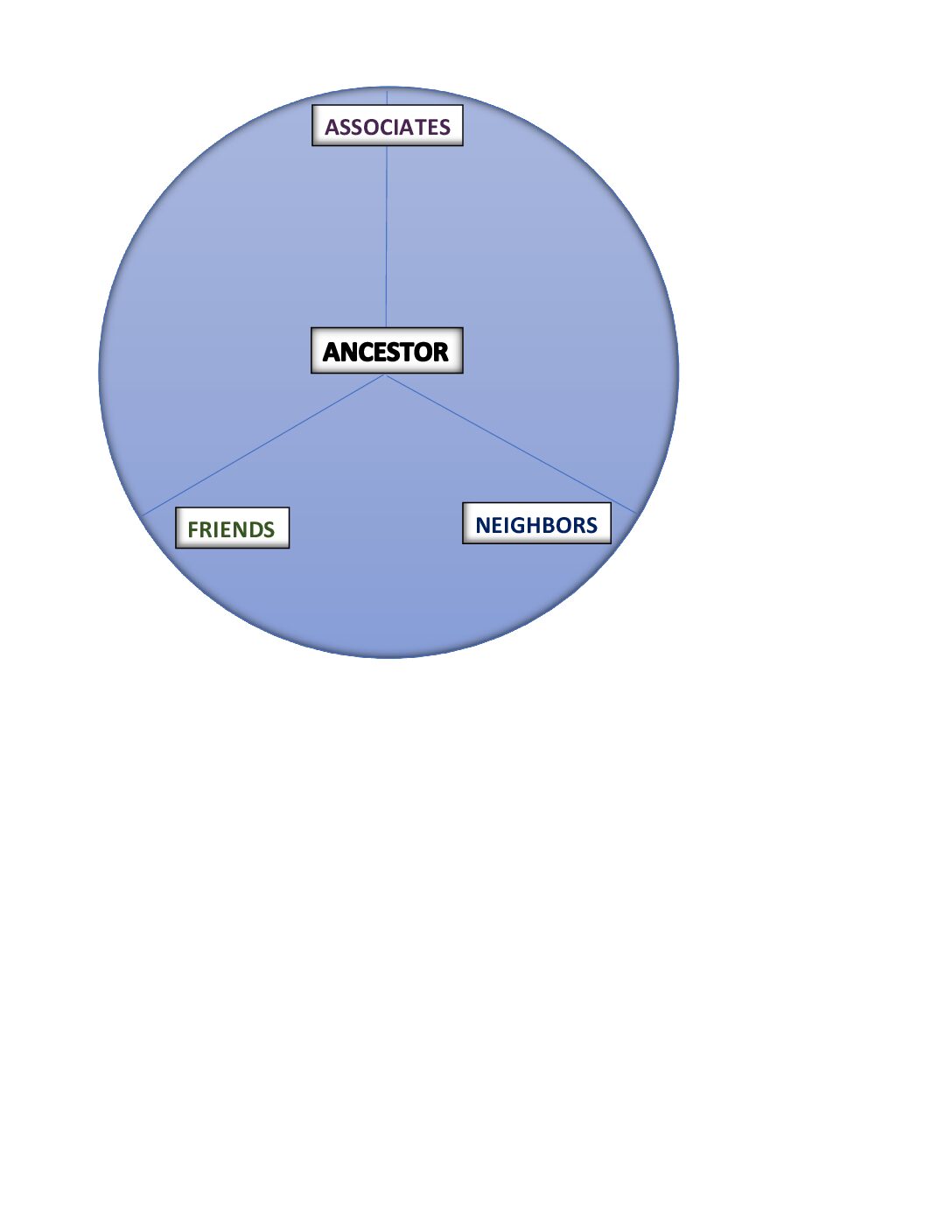

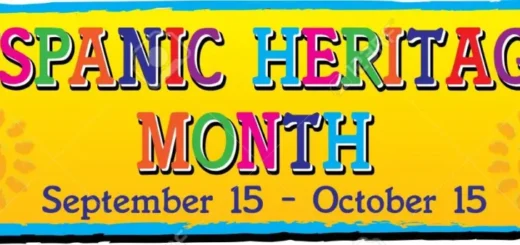
Recent Comments